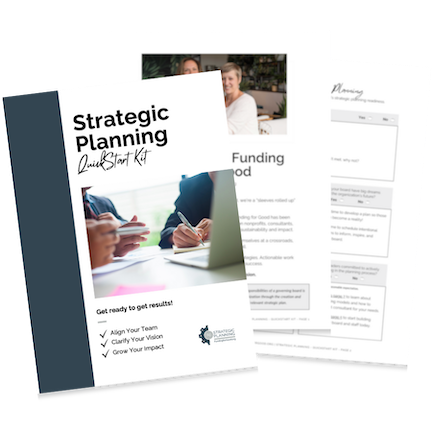BURNOUT.
How to minimize burnout. I bet you know quite a few nonprofit leaders, employees, and even volunteers who claim to suffer from burnout. Perhaps YOU suffer from burnout and need some strategies to cope. Keep reading.
The Merriam-Webster dictionary defines “burnout” in an individual as “exhaustion of physical or emotional strength or motivation usually as a result of prolonged stress or frustration.”
It’s all too easy to view burnout as an unavoidable reality in the nonprofit world. That said, if you refer to Merriam-Webster and look at the transitive verb form instead of the noun you will find the following definition: “to cause to fail, wear out, or become exhausted especially from overwork or overuse.”
This second definition places responsibility directly on the entity that produces burnout. It is important that we view burnout through the action lens rather than passively accepting the condition as something that happens to us.
A number of leadership studies indicate that 90% of nonprofit employees report burnout contributed to a job transition. These statistics highlight the need for organization leaders at both the board and staff levels to make a conscious effort to address workplace “burnout culture.” Doing so protects both the individuals we employ and the organization we serve.
Today, we are going to explore contributing factors of burnout in the workplace and share several effective strategies for combatting it.
Key Factors of Burnout:
Some of the most commonly reported factors that lead to burnout include:
- High emotional stress
- Operating in constant crisis mode
- Trying to “do/be everything for everybody”
- Chronic overtime hours
- Lack of competitive pay
- Lack of professional skills or experience
- Unrealistic deadlines
- The fact that “making time to take time off is more stressful than just skipping the much needed time off.”
Job requirements aren’t specific enough for employees to be efficient
How many times have you declared, “I wear lots of different hats” at my organization? The culture of demanding more from fewer people directly contributes to workplace burnout. Nonprofit employees are often praised for their passion for the organization. They tend to “go above and beyond the call of duty.” They also receive praise for their willingness to assume job roles and responsibilities outside of their skill set or comfort zone.
Furthermore, Nonprofit managers seek to get “more bang for their buck,” so they delegate tasks to employees even if they aren’t qualified. Alternatively, they could hire a staff member with one key skill set or pay higher market prices to contract a professional, but this may stress the budget.. This leaves us with frustrated employees who spend hours completing tasks that would have taken a more specialized staff member a fraction of the time to get the job done.
Lack of Fair/Competitive Compensation
Mission focused employees often adopt the mindset of “We work until the job is finished”. This leads to long hours without overtime compensation, responding to work situations after hours, or forfeiting much-needed vacation time.
Then there are those employees who say, “Who cares about the overtime? I would be happy just to get my regular paycheck on time!” Unfortunately, it is all too common for small nonprofits to operate on a “paycheck to paycheck” basis. Moreover, employees are forced to hold checks or forfeit them for “the greater good of the mission.”
Strategies to Prevent and Reduce Burnout
Personal/Mental Health
- Emphasize that policies are meant to protect people and the organization, not just penalize them.
- Offer flex hours/PTO.
- Clarify expectations and incentives for staff and schedule regular performance reviews.
- Ensure that all employees truly have time to “disconnect” on paid time off or during vacation times.
Reduce the CRISIS CULTURE
- Establish Goals– ensure that the board and staff work plans fully align with a current strategic plan, establish realistic goals/objectives, and prioritize tasks by determining which produce the highest impact. All too often the “to do” list keeps our calendar full of low-impact items that increase stress, take away focus on high-impact duties, and contribute to the “crisis mentality,”
- Set boundaries- educate your community/clients about operating norms, phone calls, response time. Stand firm so the community learns to value and respect your time as much as you do (or should!)
Create a Positive Work environment
- Connect with your team to evaluate the current work environment
Request staff feedback to implement simple strategies to engage staff.
For example: quick walk during a staff meeting, best ways to demonstrate an appreciation of staff, brainstorming sessions to ensure full team’s input, ways to celebrate key milestones, favorite gift cards, relationships/respect strategies to build positive relationships between board and staff/volunteers.
Compensate workers fairly for their labor
- This means the board and leadership staff will need to engage in intentional conversations and strategic planning that prioritizes competitive pay, health benefits, and performance-based incentives.
- If you are not quite sure what “competitive pay” for a specific job role in your organization should be, refer to online resources such as Salary.com, Glassdoor.com, Indeed.com or the Bureau of Labor Statistics.
Creating a positive and productive workplace culture is an intentional process. It is not realistic to expect “smooth sailing all the time.” That said, the organization’s board and executive staff can certainly establish policies that PROTECT the team, not just the organization’s programs and assets.
Were here to support you and your mission and you work to grow for good in 2020!
Mandy & Marie



